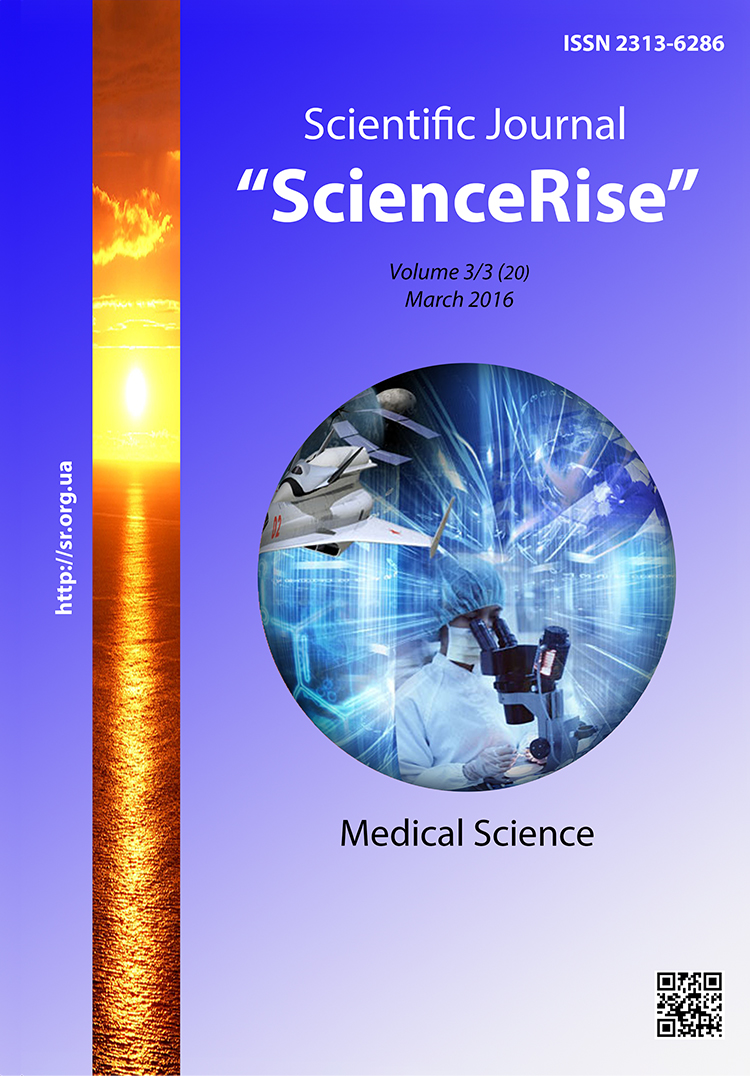Клініко-соціальні аспекти вибору механічного пристрою для мезіодистального переміщення зубів
DOI :
https://doi.org/10.15587/2313-8416.2016.65041Mots-clés :
мезіодистальне переміщення зубів, знімна, незнімна, комбінована ортодонтична техніка, клініко-соціальні аспекти виборуRésumé
В статті представлені пристрої для мезіодистального переміщення зубів, які є найбільш вживаними в практиці лікаря – ортодонта в Україні та інших країнах, складові яких були або вдосконалені, або поєднані з елементами інших апаратів. Розглянуті основні недоліки груп апаратів, та еволюція їх вдосконалення. Враховано виникнення найновіших пристосувань, які витіснили з вжитку вже існуючі, разом з їх недоліками, але не виключають нові побічні ефекти, пов’язані з способом та місцем їх використання
Références
Flis, P. S. (2007). Ortodontija. Vinnycja: Nova knyga, 178.
Horoshilkina, F. Ja. (2006). Ortodontija. Moscow: Med. informacionnoe agentstvo, 544.
Doroshenko, K. V., Ijevljeva, Ju. V., Dovbenko, S. A., Saranchuk, O. V., Doroshenko, S. I., Kul'gins'kyj, Je. A. (2009). Patent № 43071. Aparat dlja meziodystal'nogo peremishhennja zuba. u200903887. zajavl. 21.04.2009; opubl. 27.07.2009; Bjul. № 14.
Betel'man, A. Y., Pozdnjakova, A. Y., Muhyna, A. D., Aleksandrova, Ju. M. (1965). Ortopedycheskaja stomatologyja detskogo vozrasta. Kyiv: Zdorov'ja, 407.
Varava, G. M., Strelkovskyj, K. M. (1979). Ortodontyja y protezyrovanye v detskom vozraste. Moscow: Medycyna, 81.
Flis, P. S., Flis, G. P. (2003). Patent № 54608. Neznimnyj ortodontychnyj aparat dlja peremishhennja zubiv nyzhn'oi' shhelepy u dystal'no-jazykovomu naprjamku. 2001010649. zajavl. 29.01.2001; opubl. 17.03.2003; Bjul. № 3.
Bolla, E., Muratore, F., Carano, A., Bowman, S. J. (2002). Evolution of maxillary molar distalization with the distal jet: a comparison with other contemporary methods. Angle Orthod., 72 (5), 481–494.
Safonkin, O. A. (2007). Patent № 24844. Prystrij dlja dystalizacii' zubiv. u200704381. zajavl. 20.04.2007; opubl. 10.07.2007; Bjul. № 10.
Byloff, F. K., Ali Darendeliler, M. (1997). Distal molar movement using the pendulum appliance. Part 1: Clinical and radiological evaluation. The Angle Orthodontist, 67 (4), 249–260.
Verapatveljan, A. F., Chechula, N. Y. (2013). Dystalyzacyja moljarov verhnej cheljusty v lechenyy anomalyy okkljuzyy II klassa u rastushhyh pacyentov. Dental Magazine. Available at: http://dentalmagazine.ru/praktika/distalizaciya-molyarov-verxnej-chelyusti-v-lechenii-anomalii-okklyuzii-ii-klassa-u-rastushhix-pacientov.html
Die laboratorische Herstellung des Pendulum K (1) (2009). KN KFO-Labor, 9, 16. Available at: http://www.zwp-online.info/archiv/pub/sim/kn/2009/kn0909/kn0909_16_20_kinzinger.pdf
Es ist eine großartige Option (2015). KN Kieferörthopädie Nschrichten, 7-8, 1, 4–8. Available at: http://www.zwp-online.info/archiv/pub/sim/kn/2015/kn0715/epaper/ausgabe.pdf
Carrière, L. Education/Events: Meet Our Speakers. Ortho Organizers. Available at: http://www.orthoorganizers.com/orthodontic-education-events-luis-carriere
Pixnet. Available at: http://lytornado.pixnet.net/blog/category/4597352
100 Jahre Herbstscharnier – Wiederentdeckung einer genialen Idee (2003). Veröffentlicht BZB, 1.
Rubrik: Horizont Praxis (2005). KFO-Zeitung, Issue 9-10, 6–8.
Cacciatore, G., Ghislanzoni, L. T. H., Alvetro, L., Giuntini, V., Franchi, L. (2014). Treatment and posttreatment effects induced by the Forsus appliance: A controlled clinical study. The Angle Orthodontist, 84 (6), 1010–1017. doi: 10.2319/112613-867.1
Tisseront, S. (2010). Forsus Class II Correctors: Is there an Age Limit? Orthodontic Magazine.
PowerScope™ Klasse II Korrektur. American Orthodontics. Available at: http://www.americanortho.com/de/powerscope.html
Karaman, A. I., Başçiftçi, F. A., Polat, O. (2002). Unilateral Distal Molar Movement With an Implant-Supported Distal Jet Appliance. The Angle Orthodontist, 72 (2), 167–174.
Vlic, P. C., Resai, Ch., Tormachow, N. N. (2008). Ob uctanowke mikroimplantatow w prozecce ortodontitscheckogo letschenija. Cowremennaja ctomatologija, 4, 161–164.
Nur, M., Bayram, M., Celikoglu, M., Kilkis, D., Pampu, A. A. (2012). Effects of maxillary molar distalization with Zygoma-Gear Appliance. The Angle Orthodontist, 82 (4), 596–602. doi: 10.2319/091611-595.1
Celikoglu, M., Buyuk, S. K., Ekizer, A., Unal, T. (2016). Treatment effects of skeletally anchored Forsus FRD EZ and Herbst appliances: A retrospective clinical study. The Angle Orthodontist, 86 (2), 306–314. doi: 10.2319/040315-225.124. Aslan, B. I., Kucukkaraca, E., Turkoz, C., Dincer, M. (2014). Treatment effects of the Forsus Fatigue Resistant Device used with miniscrew anchorage. The Angle Orthodontist, 84 (1), 76–87. doi: 10.2319/032613-240.1
Dr. Sam Daher’s Techniques for Class II Correction with Invisalign and Elastics (2011). Clinical Tips & Techniques. Available at: https://s3.amazonaws.com/learn-invisalign/docs/06840000000Fp2xAAC.pdf
Colville, C. D. (2012). Carriere® Distalizer™ and Invisalign® Combo for Class II Treatment. Clinical Tips & Techniques.
Klasse II – Therapie mit orthocaps und skelettaler Verankerung (2015). Kieferorthopädie Nachrichten, 9, 1, 8–11.
Kazarjan, A. F., Jemel'janova, O. S. (2013). Poslidovna dystalizacija za dopomogoju systemy INVISALIGNE. Svit ortodontii', 2, 4–8.
Cyzh, A. V., Tryl', S. I., Janko, Ju. O., Tril', V. S. (2005). Patent № 7314. Prystrij dlja dystal'nogo peremishhennja zubiv. 20041109677. zajavl. 24.11.2004; opubl. 15.06.2005; Bjul. № 6.
Napadov, M. A. (1968). Ortodontycheskaja apparatura. Kyiv: Zdorov’ja, 59.
Krishtab, S. I., Strelkovskij, K. M., Varava, G. M. (1987). Ortodontija i protezirovanie v detskom vozraste. Kyiv: Vishha shkola, 26–27.
Téléchargements
Publié-e
Numéro
Rubrique
Licence
(c) Tous droits réservés Петро Семенович Фліс, Наталія Володимирівна Ращенко, Альбіна Валеріївна Циж, Ірина Сергіївна Кузьменко 2016

Cette œuvre est sous licence Creative Commons Attribution 4.0 International.
Our journal abides by the Creative Commons CC BY copyright rights and permissions for open access journals.
Authors, who are published in this journal, agree to the following conditions:
1. The authors reserve the right to authorship of the work and pass the first publication right of this work to the journal under the terms of a Creative Commons CC BY, which allows others to freely distribute the published research with the obligatory reference to the authors of the original work and the first publication of the work in this journal.
2. The authors have the right to conclude separate supplement agreements that relate to non-exclusive work distribution in the form in which it has been published by the journal (for example, to upload the work to the online storage of the journal or publish it as part of a monograph), provided that the reference to the first publication of the work in this journal is included.

